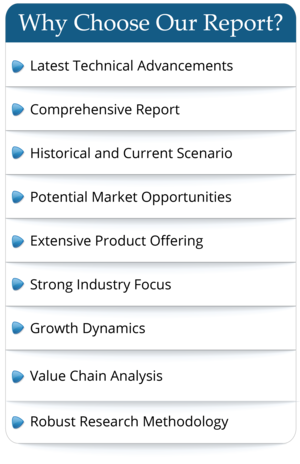Global PBAT Market Research Report 2023-Competitive Analysis, Status and Outlook by Type, Downstream Industry, and Geography, Forecast to 2029
SKU ID : Maia-23962462 | Publishing Date : 01-Jun-2023 | No. of pages : 99
Market Overview
of Global PBAT market:The latest research study on the global PBAT market finds that the global PBAT market reached a value of USD 1208.23 million in 2022. It’s expected that the market will achieve USD 4595.94 million by 2028, exhibiting a CAGR of 24.94% during the forecast period.
PBAT (polybutylene adipate terephthalate) is a thermoplastic biodegradable plastic. PBAT is a copolymer of aliphatic and aromatic, which combines the excellent degradation performance of aliphatic polyester and the good mechanical properties of aromatic polyester. In addition, PBAT also has excellent biodegradability, which is widely used in biodegradable plastics and degradable materials for market applications.
Impact on the supply chain
Due to the global outbreak of COVID-19, many countries and regions have adopted strict lock-in measures, and many companies have also adopted home office work. For the PBAT industry, COVID-19 has affected the supply chain and industrial chain to a certain extent. On the one hand, due to plant shutdowns or reduced production capacity, the supply of raw materials for PBAT will be affected. On the other hand, since the virus may spread through logistics and transportation, logistics inspections are more stringent, which will slow down the logistics speed and affect the delivery time and production cycle of PBAT.
Impact on downstream markets
The outbreak of COVID-19 has had a certain impact on the downstream market of PBAT. For industrial applications, due to plant shutdowns or reduced production capacity, the demand for this part of PBAT declines. For the packaging sector, due to the lockdown measures, many residents tend to hoard food or shop online, which will lead to an increase in the demand for PBAT used in packaging materials. Due to the impact of COVID-19 on PBAT, PBAT manufacturers need to adjust production and sales strategies in time to respond to market changes.
Issues of production cost and manufacturing process
PBAT is considered to be an updated product of traditional plastics due to its biodegradability and good performance. At present, the price of PBAT is still much higher than that of traditional plastic due to the raw materials and production process, which will increase the cost and expense of the end customer. At the same time, there are still some shortcomings in the current PBAT synthesis process, such as by-products that affect product quality. Therefore, in some applications, PBAT still has a certain distance to replace traditional plastics. Manufacturers need to have a deeper understanding of polymerization engineering technology and continue to develop and research new products in order to develop PBAT products that meet cost and performance requirements. The production process and manufacturing cost of PBAT will restrict the development of the industry to a certain extent.
From petrochemical resources
PBAT has extremely high biodegradability, and will decompose in compost. However, the main raw materials for the synthesis of PBAT, 1,4-butanediol, adipic acid, and dimethyl terephthalate or terephthalic acid, are derived from petrochemical products. With the rapid economic development and population increase, petrochemical resources are rapidly depleted, which may limit the development of the PBAT industry. In addition, PBAT is decomposed into monomer components over time. The problem is that monomeric terephthalic acid (TPA), which is a man-made compound, actually only a few microorganisms can degrade it. These factors will limit the development of the PBAT industry to a certain extent. At the same time, the development of bio-based PBAT will be an inevitable trend in the development of the industry.
Policy impact
The impact of traditional non-degradable plastics on the environment has become increasingly prominent, and many countries have begun to introduce policies to restrict the use of traditional plastics. For example, the Chinese government has banned the use of disposable plastic products, such as plastic tableware and plastic bags, in major cities, and also banned the use of plastic wrappers. The European Council passed new regulations on single-use plastics within the European Union. The bill stipulates that all member states prohibit the substitution of certain plastic products, including cotton swabs, knives, plates, straws, stirrers and balloons. With the tightening of restrictions on traditional non-degradable plastics worldwide, companies will be encouraged to develop green alternative products. Due to its biodegradability, PBAT is considered a high-quality alternative to traditional plastics, and it is expected to have more development opportunities.
Region Overview:
Geographically, Europe held the largest market share – 40.11% in 2022.
Company Overview:
BASF is one of the major players operating in the PBAT market, holding a share of 32.56% in 2023.
BASF
BASF is a chemical company. The Company operates in six segments, including chemicals, plastics, performance products, functional solutions, agricultural solutions, and oil and gas.
Novamont
Novamont produces chemical products. The Company provides biodegradable thermoplastic material for agriculture, catering, and industry sectors.
Segmentation Overview:
Among different product types, Industrial Grade segment is anticipated to contribute the largest market share in 2028.
Industrial Grade
PBAT is flexible and very suitable for use in combination with other biodegradable polymers that have high elastic modulus and strength but are very brittle. Industrial grade PBAT can be used to produce plastic products to replace traditional plastics.
Food Grade
Food grade PBAT is mainly used for food packaging, such as plastic wrap, meal boxes, drinking cups, etc.
Application Overview:
By application, the Packaging segment occupied the biggest share from 2018 to 2022.
The report covers a research time span from 2018 to 2029; combines extensive quantitative analysis and exhaustive qualitative analysis; presents not only an overview of the global PBAT market in metrics of sales, revenue, growth rate, but also a deeper dive into the segmented market by region, product type and downstream industry, showing the readers a clear and distinct picture of how the market is distributed from different perspectives.
For competitive landscape, prominent players with considerable market shares are comprehensively analyzed in this report. With information regarding the concentration ratio and detailed data reflecting the market performance of each player shared, the readers can acquire a holistic view of the competitive situation and a better understanding of their competitors.
As the COVID-19 takes over the world, we are continuously tracking the changes in the markets. We analyzed the impact of the pandemic in detail, along with other key factors, such as macro-economy, regional conflicts, industry related news and policies. Meanwhile, market investment scenario, technology status and developments, supply chain challenges, among other essential research elements are all covered.
Research Scope
This report provides an overview of the global PBAT market and analyzes the segmented market by product type, downstream industry, and region, presenting data points such as sales, revenue, growth rate, explaining the current status and future trends of the PBAT and its sub-markets in an intuitive way.
Key Companies in the global PBAT market covered in Chapter 3:
Lotte Fine Chemical
Xinjiang Blue Ridge Tunhe Chemical Industry Joint Stock Co., Ltd
BASF
Shandong Yuetai
Novamont
SK Chemicals
Kingfa Sci.&Tech.Co., ltd.
Jinhui Zhaolong High Technology
In Chapter 4 and Chapter 14.2, on the basis of types, the PBAT market from 2018 to 2029 is primarily split into:
Industrial Grade
Food Grade
In Chapter 5 and Chapter 14.3, on the basis of Downstream Industry, the PBAT market from 2018 to 2029 covers:
Packaging
Agriculture & Fishery
Consumer Goods
Coatings
Others
Geographically, the detailed analysis of consumption, revenue, market share and growth rate, historic and forecast (2018-2029) of the following regions are covered in Chapter 8 to Chapter 14:
North America (United States, Canada)
Europe (Germany, UK, France, Italy, Spain, Russia, Netherlands, Turkey, Switzerland, Sweden)
Asia Pacific (China, Japan, South Korea, Australia, India, Indonesia, Philippines, Malaysia)
Latin America (Brazil, Mexico, Argentina)
Middle East & Africa (Saudi Arabia, UAE, Egypt, South Africa)
Key Factors Considered
COVID-19
Amid the COVID-19 crisis, the PBAT market has definitely taken a hit. The report describes the market scenario during and post the pandemic in the vision of upstream raw materials, major market participants, downstream major customers, etc. Other aspects, such as changes in consumer behavior, demand, transport capacity, trade flow under COVID-19, have also been taken into consideration during the process of the research.
Regional Conflict / Russia-Ukraine War
The report also presents the impact of regional conflict on this market in an effort to aid the readers to understand how the market has been adversely influenced and how it’s going to evolve in the years to come.
Challenges & Opportunities
Factors that may help create opportunities and boost profits for market players, as well as challenges that may restrain or even pose a threat to the development of the players, are revealed in the report, which can shed a light on strategic decisions and implementation.
Chapter Outline
Chapter 1 starts the report with a brief overview of the research scope, as well as the definitions of the target market and the subdivisions.
Chapter 2 integrates and sketches the research findings and conclusions in a clear and explicit way.
Chapter 3 presents the competitive landscape by displaying the sales, revenue, and market shares of the top players. It also profiles the major market participants with their business introductions, sales, price, revenue, gross, growth rates, etc.
Chapter 4 breaks down the market by different product types and shares data correspondingly with the aim of helping the readers know how the market is distributed by type.
Chapter 5 segments the market by downstream industry, with data covers sales, revenue, and growth rate tracing back to 2018.
Chapter 6 is the analysis of the whole market industrial chain, ranging from upstream raw materials to downstream customers, with regional conflicts taken into consideration.
Chapter 7 elaborates on market dynamics. Factors that drive, challenge, or restrain the market are all listed, together with industry news, opportunities, impacts of COVID-19, and SWOT analysis.
Chapter 8 shows the breakdown data at the regional level, which enables the readers to picture the regional competitive pattern of the market and learn about the revenue, sales, and market share of all the major regions.
Chapter 9-13 focus on each and every of the major region, specifically, North America, Europe, Asia Pacific, Latin America, Middle East & Africa. Sales, price, revenue, gross, gross margin, among others, will be all be presented.
Chapter 14 forecasts the future trend of the market not only as a whole but also from the perspective of all segments.
Years considered for this report:
Historical Years:
2018-2022Base Year:
2022Estimated Year:
2023Forecast Period:
2023-2029Frequently Asked Questions
- By product type
- By End User/Applications
- By Technology
- By Region

 Pre-order Enquiry
Pre-order Enquiry Request Free Sample
Request Free Sample


 Request Sample
Request Sample Request Discount
Request Discount










